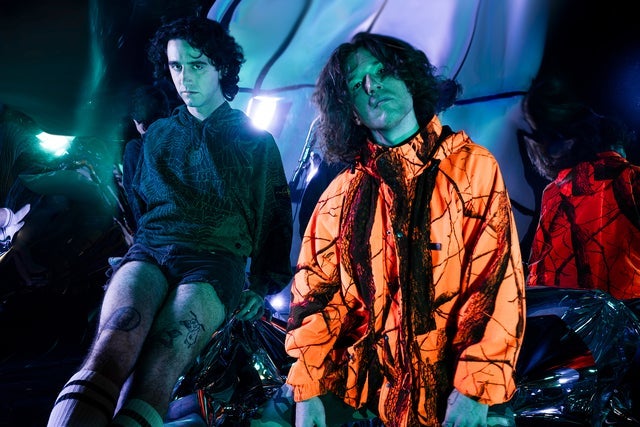From bedroom chaos to pit-tested duo
Machine Girl began as Matt Stephenson's solo project, then became a duo with drummer Sean Kelly, fusing breakcore, jungle, and punk. The catalog runs from early
WLFGRL rush to the sharper
U-Void Synthesizer, and the
Neon White soundtrack pulled new ears without dulling the edge. The most important shift was adding real drums; it turned laptop chaos into a body-first set that can sprint from 160 to 200 BPM. Expect a blast of
Athoth a Go!! Go!! and a spotlight on a
Neon White cut like
Glass Ocean. You will spot beat-up skate shoes, patched messenger bags, mesh tops, and lots of custom ear protection as people set quick, respectful pits. Name trivia: the project title nods to the 2008 splatter film, and early shows were played off the floor with only a laptop and a tiny pad controller. Note: the set and staging details here are educated guesses based on recent patterns, not a promise.
Set sparks, crowd makeup, and odd facts
Floor culture, not a photo op
What the room looks and sounds like
Expect circle surges up front and a soft edge on the sides where people catch breath and hand out water. Fits skew practical and expressive: cargo shorts, sport sunglasses, mesh layers, and vintage tees cut for dancing. You will hear a quick count-in before eruptions, a crowd chant for
Machine Girl between songs, and friendly checks when someone slips. Light cues flash hard, but the focus stays on the drums and the bodies, not on props or long speeches. Merch trends lean toward long sleeves with bold fonts, glitch art, and small-run prints that sell out by city. You might spot homemade patches using
WLFGRL era art or fan buttons nodding to
Neon White. After the show, people trade track IDs and clip times, then share photos of bruised shins like badges from a fast night.
Merch and keepsakes
Riffs without guitars: the music takes the wheel
Drums, samples, and breath between blasts
Vocals are shouted more than sung, so words cut through the mix like another drum hit.
Machine Girl stacks chopped breaks, crunchy bass, and siren-like synth stabs while Sean Kelly drives tight snare patterns that keep the pit in step. They reshape album cuts live, often extending a drop or stripping the kick for a bar to make the next slam hit harder. Tempos run hot, but they insert quick half-time pivots that let the room breathe before sprinting again. A neat detail: the kick and bass often route through a dirt pedal, giving a guitar-like bite without losing sub weight. Stephenson rides faders and mutes like an instrument, flicking vocal chops in and out so hooks feel improvised. Some nights they retune a synth patch a notch darker and push a jungle loop into a four-on-the-floor for 16 bars, then snap back to breakbeats for surprise.
Small choices with big lift
Kindred noise for open-eared fans
Adjacent chaos, shared rooms
Death Grips fans overlap because both acts mash industrial textures with hip-hop energy and prize full-body movement.
100 gecs makes sense for hyper-digital hooks and maximal sound that still lands like punk onstage. If you like abrasive bars over wild beats,
JPEGMAFIA scratches that itch, and his crowds already enjoy sudden rhythm flips. On the heavy, physical end,
Show Me the Body draws a similar scene where hardcore grit meets experimental electronics. All four names value DIY spirit, high BPM swings, and sets that chase feeling over polish.
Why these names fit



